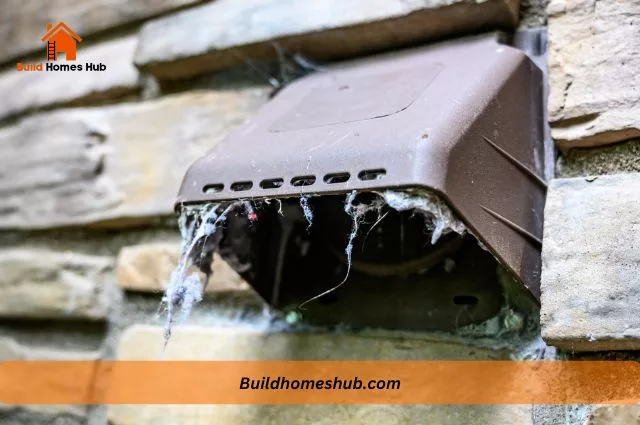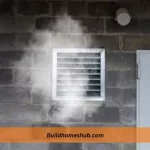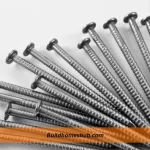When it comes to maintaining a safe and efficient laundry room, proper dryer venting is crucial. Not only does a properly vented dryer reduce the fire risk, but it also increases the appliance’s efficiency and prolongs its lifespan. In this guide, we will cover the most common dryer vent locations and discuss the pros and cons of each. But first, let’s talk about how to locate dryer vents.
How to Locate Dryer Vents
There are a few ways to locate your dryer vent; they include:
- Check the owner’s manual for your dryer. It should have information on where the vent is located.
- Look for the vent on the outside of your home. It’s typically located near the back of the house, near the dryer.
- Trace the dryer’s exhaust pipe. It should lead you to the vent.
- Look for a removable vent cover. This is usually located on an exterior wall, usually near the floor.
If all else fails, contact a professional to help locate the vent. Please note that it’s important to ensure your dryer vent is not blocked. A blocked vent can cause a fire hazard.
Where is The Most Common Place to Vent a Dryer?
The most common place to vent a dryer is through an exterior wall, using a vent hood. This method allows for the easiest and most direct path for the hot air and lint to escape the home. A vent hood is typically installed on the home’s exterior, directly behind the dryer, and is connected to the dryer through a vent pipe.
One of the main advantages of venting through an exterior wall is that it is relatively simple to install and does not require much remodelling. Also, venting through an exterior wall allows hot air and lint to be expelled outside the home, reducing fire risk and improving indoor air quality.
However, venting through an exterior wall also has its drawbacks. For one, it can be difficult to seal the vent hood to prevent drafts and leaks. Additionally, if the vent hood is not cleaned regularly, lint can build up and clog the vent, reducing the dryer’s efficiency and increasing the fire risk.
Other Common Dryer Vent Locations
In addition to venting through an exterior wall, several other common dryer vent locations exist. These include:
1. Venting through the roof
This method involves installing a vent hood on the home’s roof and connecting it to the dryer with a vent pipe. This method is often used when the laundry room is on an upper floor and venting through an exterior wall is not feasible. However, venting through the roof can be more difficult to install and maintain and may require professional assistance.
2. Venting through the soffit
Similar to venting through the roof, this method involves installing a vent hood on the soffit (the underside of the eaves) and connecting it to the dryer with a vent pipe. This method can be a good option for homes with limited exterior wall space, but it may also be more challenging to install and maintain.
3. Venting through the floor
This method involves installing a vent hood on the floor and connecting it with a vent pipe to the dryer. This method is often used when the laundry room is located in a basement or crawlspace. However, venting through the floor can be more challenging to install and maintain and may require professional assistance.
Choosing the Right Dryer Vent Location
When choosing the right dryer vent location, there are several factors to consider. These include the location of the laundry room, the layout of the home, and the accessibility of the vent hood for cleaning and maintenance.
It’s essential to consult a professional to assess the feasibility of different venting options and ensure that the vent hood is properly installed and maintained. Additionally, it’s important to ensure that the vent hood and pipe are cleaned regularly to reduce the fire risk and improve the dryer’s efficiency.
Do Dryers Have to Be Vented Outside?
Yes, most dryers require venting to the outside of the building. The venting system carries the moisture-laden air and lint generated during the drying process out of the home. This is important for safety reasons as the lint can accumulate and create a fire hazard and also prevent moisture buildup inside the home, which can cause mold and mildew growth.
However, some types of dryers, such as ventless or condensing dryers, do not require venting to the outside. These dryers use a heat exchanger to cool and condense the moisture from the air inside the dryer, allowing the moisture to be drained away through a pipe rather than vented to the outside.
How Can I Vent My Dryer Without Outside Access?
If you do not have outside access for venting your dryer, there are a few options to consider:
1. Ventless or condensing dryer
These dryers use a heat exchanger to cool and condense the moisture from the air inside the dryer, allowing the moisture to be drained away through a pipe, rather than vented to the outside.
2. Indoor venting kit
Some dryers come with an indoor venting kit that allows you to vent the dryer through a nearby window or wall using a special adapter and hose.
3. Dryer Duct Booster
This fan-assisted duct system draws lint and moisture out of the dryer and pushes it through an interior wall to the outside.
4. Ductless Dryer
Some dryers are designed for indoor use and do not require venting to the outside. They are called ductless dryers. They use a heat pump to dry clothes and don’t produce any lint.
It’s important to note that while these options may work, they may not be as effective as venting to the outside and may not be approved by local building codes or safety regulations. It’s always best to check with local authorities before making any changes to your dryer venting system.
Conclusion
Proper dryer venting is crucial for maintaining a safe and efficient laundry room. Venting through an exterior wall is the most common method, but other options, such as venting through the roof, soffit, and floor, can also be used.
When choosing a dryer vent location, it’s important to consider the layout of the home and the accessibility for cleaning and maintenance. It is also essential to consult with a professional to ensure proper installation and maintenance. Regular cleaning of the vent hood and vent pipe is essential to reduce the fire risk and improve the dryer’s efficiency.
I like to think I can help you with all the information you need on home renovations and DIY tips. You should subscribe.











